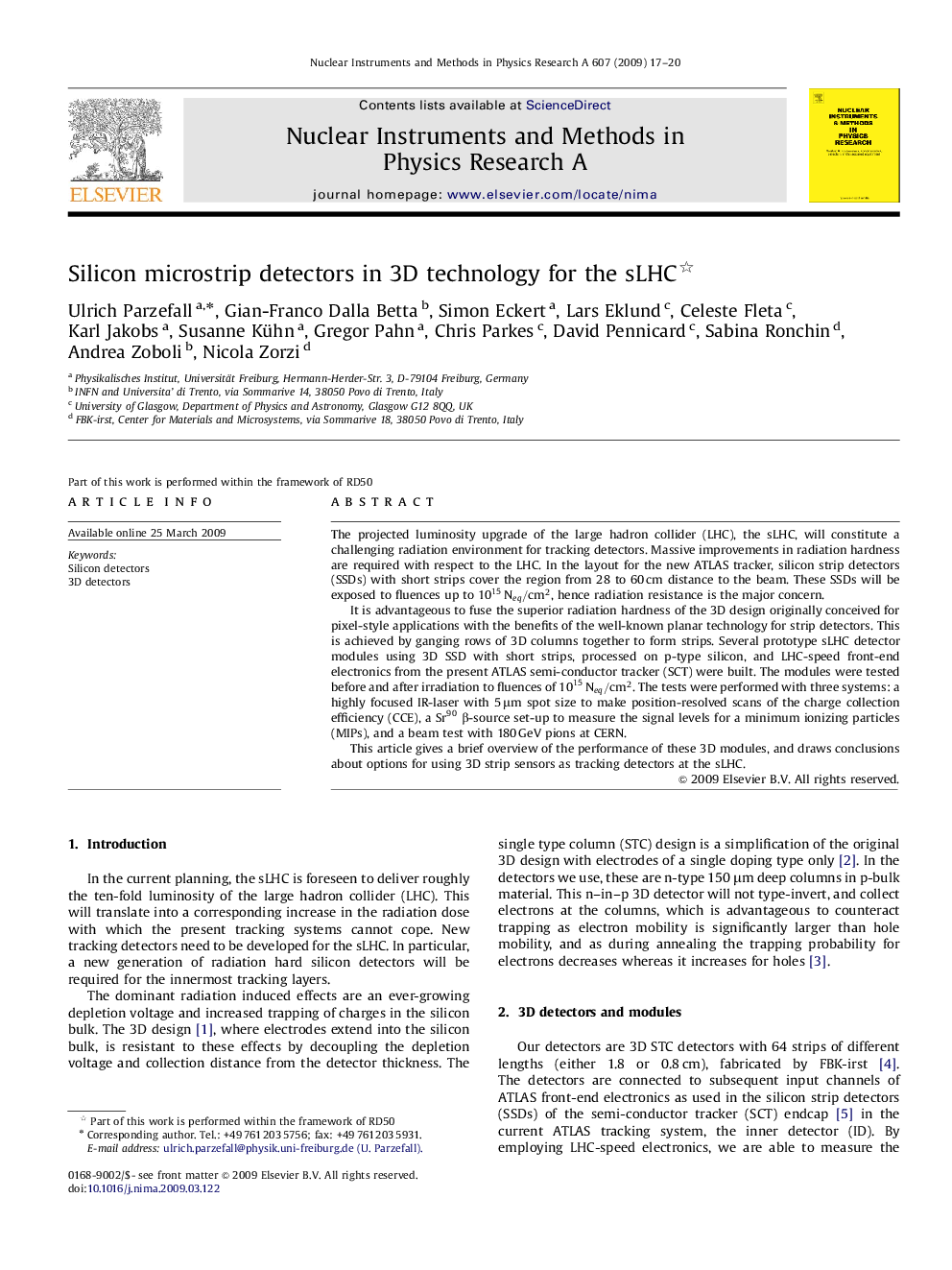| Article ID | Journal | Published Year | Pages | File Type |
|---|---|---|---|---|
| 1828013 | Nuclear Instruments and Methods in Physics Research Section A: Accelerators, Spectrometers, Detectors and Associated Equipment | 2009 | 4 Pages |
The projected luminosity upgrade of the large hadron collider (LHC), the sLHC, will constitute a challenging radiation environment for tracking detectors. Massive improvements in radiation hardness are required with respect to the LHC. In the layout for the new ATLAS tracker, silicon strip detectors (SSDs) with short strips cover the region from 28 to 60 cm distance to the beam. These SSDs will be exposed to fluences up to 1015Neq/cm2, hence radiation resistance is the major concern.It is advantageous to fuse the superior radiation hardness of the 3D design originally conceived for pixel-style applications with the benefits of the well-known planar technology for strip detectors. This is achieved by ganging rows of 3D columns together to form strips. Several prototype sLHC detector modules using 3D SSD with short strips, processed on p-type silicon, and LHC-speed front-end electronics from the present ATLAS semi-conductor tracker (SCT) were built. The modules were tested before and after irradiation to fluences of 1015Neq/cm2. The tests were performed with three systems: a highly focused IR-laser with 5μm spot size to make position-resolved scans of the charge collection efficiency (CCE), a Sr90Sr90ββ-source set-up to measure the signal levels for a minimum ionizing particles (MIPs), and a beam test with 180 GeV pions at CERN.This article gives a brief overview of the performance of these 3D modules, and draws conclusions about options for using 3D strip sensors as tracking detectors at the sLHC.
